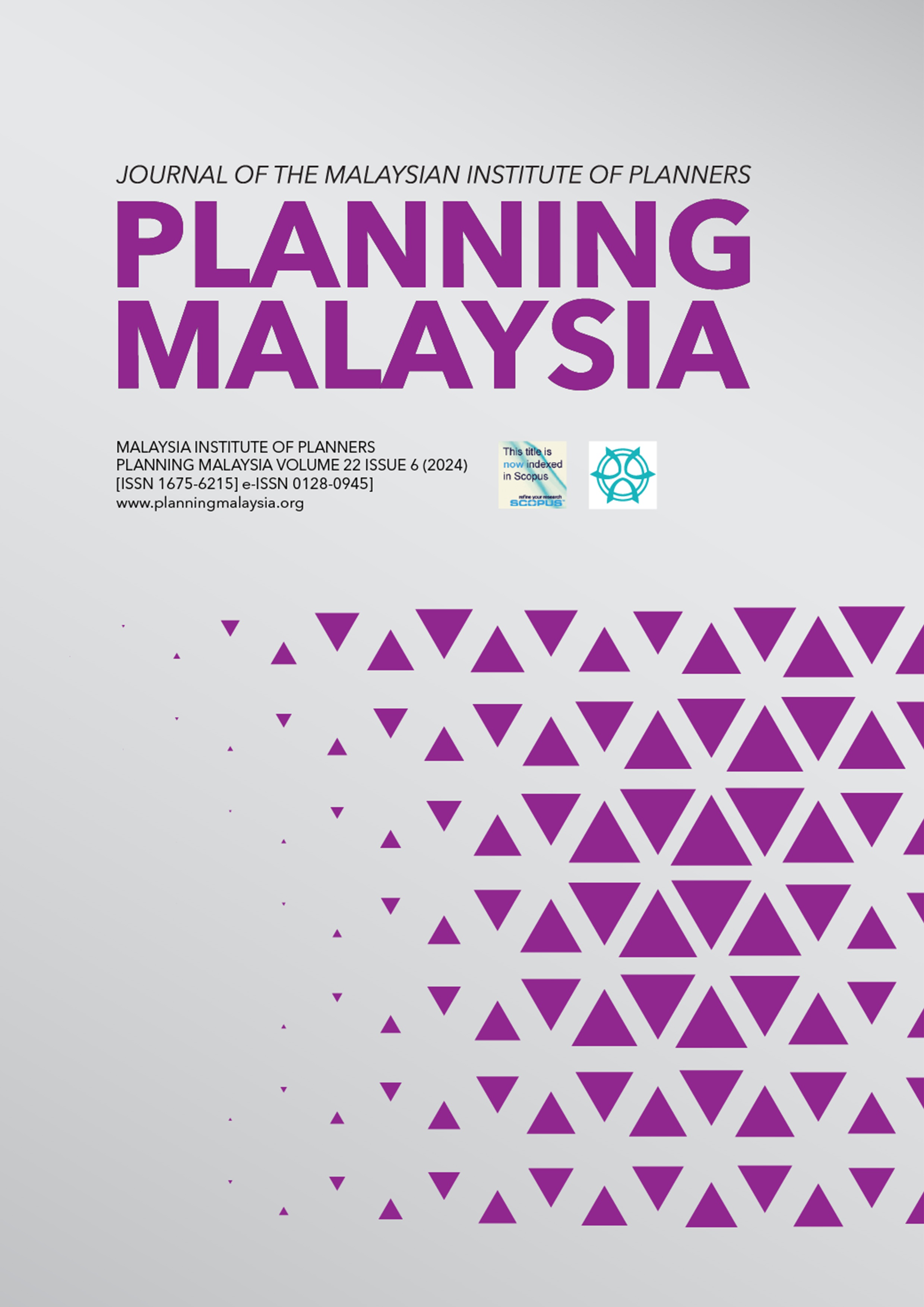EVALUATING THE URBAN ARCHITECTURAL COLOUR STATUS OF JINAN, CHINA FROM THE PERSPECTIVE OF COLOUR GEOGRAPHY
DOI:
https://doi.org/10.21837/pm.v22i34.1644Keywords:
Architectural, Cultural, Geography, Urban Colour, Urban planningAbstract
This paper provides a comprehensive evaluation of the current status of architectural colour in Jinan through the theory of colour geography. Founded by Jean-Philippe Lenclos, colour geography studies the influence of geography and social culture on architectural urban colour. This study used tools to generate the data on site, including Chinese architectural colour charts, drones, and cameras. The city of Jinan, China, was chosen because of its rich history and culture, unique geographical environment, and multi-ethnic composition, all of which have contributed to its diverse urban colour. The colour characteristics of Jinan are divided into three areas: the old city, the new city, and the industrial area. This study provides an in-depth analysis of the current status of urban colour in Jinan, which provides a scientific basis for future urban planning and design to support sustainable development and cultural heritage protection. The results revealed that warm earth tones and traditional styles dominate the old city area, while cooler modern tones dominate the new city area. The industrial area is dominated by grey and yellowish brown. The study found that Jinan's urban colour scheme lacks uniformity, especially in the new development areas where highly saturated colours are widely used. In contrast, the colour scheme in the old city is more consistent and reflects traditional aesthetics. The study highlights the need for coordinated colour schemes to preserve cultural heritage and improve the consistency of urban aesthetics. We hope this study not only enriches the theory of colour geography, but also provides an important reference for existing and future urban colour planning in Jinan.
Downloads
References
Adam, M., Al-Sharaa, A., Ab Ghafar, N., Mundher, R., Abu Bakar, S., & Alhasan, A. (2022). The Effects of Colour Content and Cumulative Area of Outdoor Advertisement Billboards on the Visual Quality of Urban Streets. ISPRS International Journal of Geo-Information, 11(12), 630. https://doi.org/10.3390/ijgi11120630
Ali, M., Mohd Ismail, K., Has-Yun Hashim, K. S., Suhaimi, S., & Mustafa, M. H. (2018). Heritage building preservation through building information modelling: Reviving cultural values through level of development exploration. Planning Malaysia, 16(2), 62-72. https://doi.org/10.21837/pm.v16i6.461
Bian, W. (2015). Research on sustainable development of Urban colour based on new contextualism. [Doctoral Dissertation, Tianjin University]. https://navi.cnki.net/knavi/journals/JZYW/detail.
Bian, W. (2019). Study on the sustainable of urban colour based on new contextualism. China Architecture & Buiding Press.
Chen, C., & Liu, E. (2019). City colour planning from perceptual cognition to quantified governance. Planners, 02(30).
Cui, L. (2006). The colour programme and design of city environment. In Baidu Scholar.https://xueshu.baidu.com/usercenter/paper/show?paperid=c291df9a4722b51246a970f65f87fa2b
Cui, Z. (2020). Research on Planning and Design of Urban Architectural colour in Changchun. E3S Web of Conferences, 165, 04029. https://doi.org/10.1051/e3sconf/202016504029
Huang, B. (2012). Realization of urban colour characteristics in china: A study on the methodology of urban colour planning in china. China Academy of Fine Arts Press.
Lin, L. (2021, July 3). Research on the Composition Model of Dalian Urban colour Image. http://cdmd.cnki.com.cn/Article/CDMD-10141-1020109468.htm
Linton, H. (1999). Colour in Architecture. McGraw-Hill Professional Publishing.
Ma, Y. D and Misni, A. (2024). The Application and Concept of the Theory of Five Colour in Ancient Chinese Urban Architecture. International Journal of Art and Design, 8 (1, SI-2), 61-80. https://doi.org/10.24191/ijad.v8i1/SI-2.2504
Qin, Z., & Fang, C. (2014, April). What colour is your city? China National Geographic. http://www.dili360.com/cng/article/p53e08a99618a806.htm
Song, J. (2010). The colourful expression of Hangzhou - On the colour designing of Hangzhou. Public Art. cnki:SUN:GOYS.0.2010-02-006
Song, J., Ding, D., Gu, C., & He, W. (2019). Urban colour. China Science and Technology Press.
Teriman, S., Yigitcanlar, T., & Severine, M. (2009). Urban Sustainability and Growth Management in South-East Asian City Regions: The Case of Kuala Lumpur and Hongkong. Planning Malaysia, 7(1), 47-68. https://doi.org/10.21837/Pm.v7i1.71
Wang, P., Song, W., Zhou, J., Tan, Y., & Wang, H. (2023). AI-Based Environmental colour System in Achieving Sustainable Urban Development. Systems, 11(3), 135. https://doi.org/10.3390/systems11030135
Downloads
Published
How to Cite
Issue
Section
License

This work is licensed under a Creative Commons Attribution-NonCommercial-NoDerivatives 3.0 Unported License.
Copyright & Creative Commons Licence
eISSN: 0128-0945 © Year. The Authors. Published for Malaysia Institute of Planners. This is an open-access article under the CC BY-NC-ND license.
The authors hold the copyright without restrictions and also retain publishing rights without restrictions.


